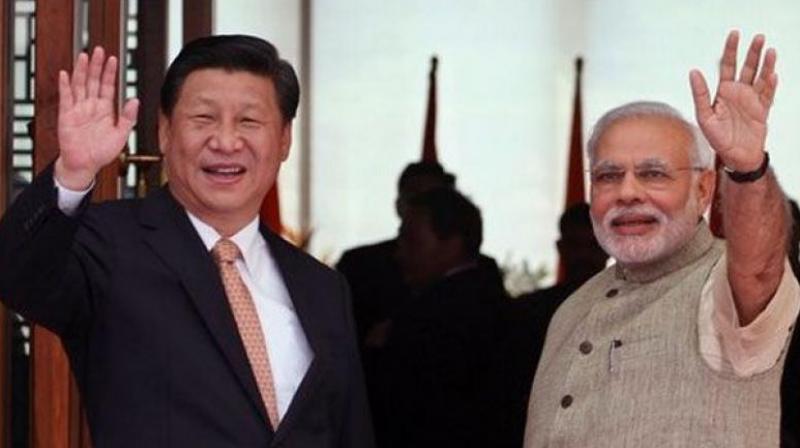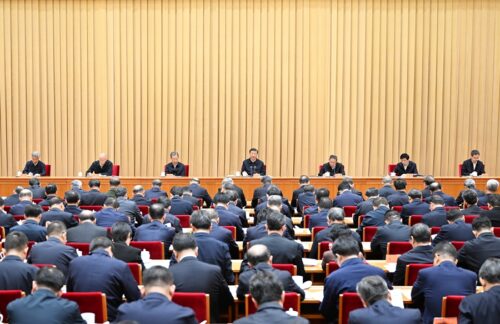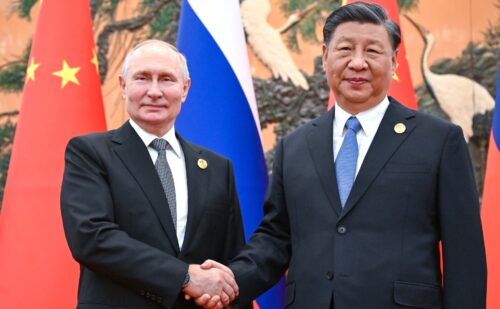India and China aim to ‘properly settle disputes’ with a bilateral summit. Will it work?

It has not been an easy year for India-China ties. Troops on a contested border had a months-long standoff. Soldiers threw stones (literally). Chinese state media aired racist caricatures. Travel warnings were issued. Business deals were frozen. And now…
A potential thaw? Per Xinhua news:
Chinese President Xi Jinping will hold an informal meeting with Indian Prime Minister Narendra Modi on April 27-28 in Wuhan, capital of central China’s Hubei Province.
Nikkei notes (paywall) that the two leaders already met briefly at the BRICS (Brazil, Russia, India, China, and South Africa) summit in Xiamen, China, last September, and they plan to meet again in Qingdao, China, in June for the Shanghai Cooperation Organisation summit.
But this “informal meeting” is the first bilateral one for Xi and Modi since the border standoff in Doklam, which a Chinese diplomat had called the “worst in 30 years.” Experts told Nikkei that “it is clear that the Chinese had put a great deal of thought into inviting Modi over on three visits in such a short period of time,” adding, “It is also unusual for Xi to welcome foreign dignitaries at provincial cities.”
Chinese Foreign Minister Wang Yi, who arranged the summit during a visit to Beijing by Indian External Affairs Minister Sushma Swaraj, said that the aim of the meeting was to “cement strategic trust, deepen substantial cooperation, properly settle disputes and realize common development.”
There are many signs of warming relations heading into the summit. “India offered to export soybean and other agriculture products to China,” NDTV reported last week, after China retaliated against U.S. tariffs by levying a fee on American soybeans.
Meanwhile, CNN reports that the Nathu La Pass — used by Indian pilgrims to reach the holy Buddhist and Hindu mountain of Kailash — will be reopened. Delhi and Beijing will also resume data sharing about the Brahmaputra and Sutlej rivers, which are crucial for flood monitoring in the country’s northeast. China wants to “explore new areas for cooperation” with India, Foreign Ministry spokeswoman Hua Chunying said last week. The river data sharing is one such area, and Nikkei suggests that “joint efforts to combat climate change” could be another one.
Finally, India has cracked down on Tibetan activism, as it “banned Tibetans from holding a rally with the Dalai Lama to mark his 60 years in exile, a move that was seen as placating Beijing,” according to Nikkei.
But whether disputes will actually be properly settled, or strategic trust actually cemented, remains unclear. Srikanth Kondapalli, a professor of Chinese studies at Jawaharlal Nehru University in New Delhi, told Nikkei that he expects “no major breakthrough,” but that there would likely be “some kind of understanding not to precipitate the bilateral relations such as Doklam last year.”
China will undoubtedly invite India to join its Belt and Road Initiative, but Nikkei notes that Modi will almost certainly reject this invitation, as the China-Pakistan Economic Corridor, a core part of Belt and Road, passes through territory that India disputes with Pakistan. China’s increasing military presence in the Indian Ocean, and specifically in rival Pakistan — a plan to build a military base there was reported early this year — is also sure to be worrying Modi as he meets with Xi.
The shadow of trade war
China’s remarkable step of coordinating a third summit with India in just one year coincides with a highly unusual effort to conduct a high-level economic dialogue with Japan last week. The common factor for both of these countries is that they could stand to gain in trade with China if a larger-scale trade war broke out with the U.S.
The Chinese “raced against the clock like never before to fix a specific date” for the dialogue with Japan last week, a Japanese government source told Nikkei in a separate piece. It was the first such meeting in over eight years.
Beijing had been declining Tokyo’s requests to resume the dialogue for years. Now, as trade friction with the U.S. intensifies, the tides have turned.
As we wrote last week, every move that China makes to draw India and Japan closer to it will likely weaken “The Quad,” a grouping of the U.S., Australia, India, and Japan that was revived late last year to some fanfare. China appears to be courting these countries to both counter American influence in the region, and buffer economically in the event of a full-blown trade war with the U.S.






